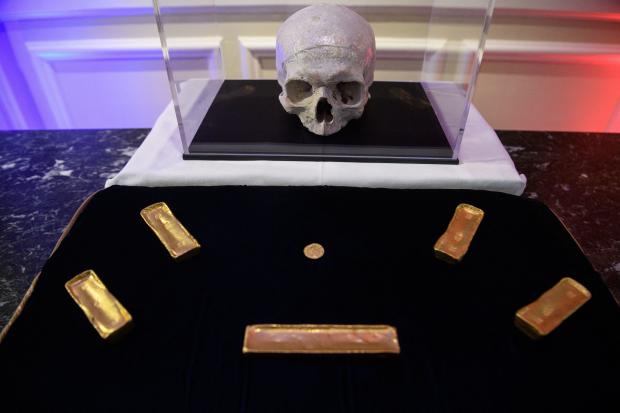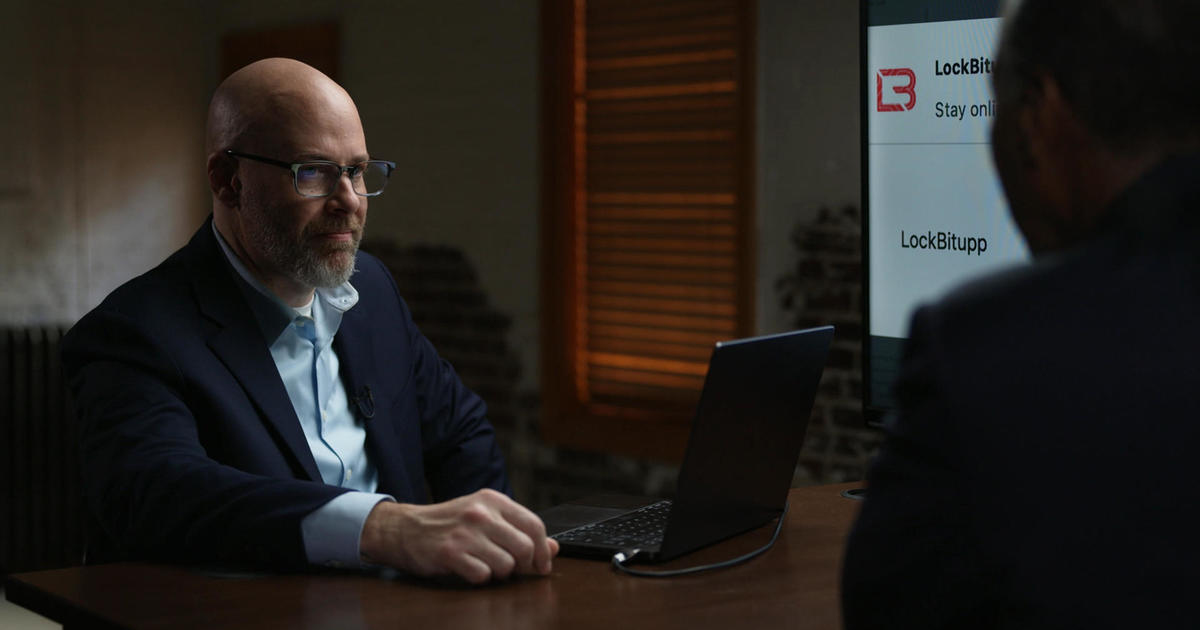U.S. returns gold treasure looted from 1746 shipwreck and skull stolen from Parisian catacombs to France
The United States has returned a set of illegally obtained artifacts, including a skull from the Parisian catacombs and golden ingots from an Atlantic shipwreck, to their rightful owner: France.
The prized objects, which also included an ancient Roman coin, were handed over on Wednesday during an official "restitution" ceremony at the French ambassador's residence in Washington.
Steve Francis, a high-ranking official in the U.S. Department of Homeland Security, along with French Ambassador Philippe Etienne, unveiled the pieces and detailed how American authorities had worked with their French counterparts to get them back into French hands.
"These objects tell the history of France, its commerce, and its people," Francis said in a statement. "HSI is proud to have played a role in ensuring these artifacts continue to be part of France's history for future generations to enjoy."
The five golden ingots had originally been looted from the Prince de Conty, a ship that wrecked in December 1746 off the French island of Belle-Ile-en-Mer, near mainland France, according to a handout provided by the French embassy.
The vessel, which was on a return trip from China, had long been forgotten, until a teacher in 1975 came across archival documents mentioning its location. He received authorization to excavate the site, but it was quickly looted, with many of the ingots disappearing before arrests were made.
However, in December 2017, five ingots matching the description of the Prince de Conty gold appeared on a list of items up for auction in California.
A French agency dedicated to underwater archeology notified American authorities, who stepped in to seize the objects.
"The evidence that was provided by the French government was overwhelming," said David Keller, a U.S. agent who focuses on cultural property and antiquities.
"These marks on them identify the people that actually made the ingots in the Qing dynasty," Keller told AFP, "so there's a lot of history just wrapped up in it."
The golden coin is much older, dating back to the third century AD.
It is part of a larger treasure trove of ancient Roman objects, known as the Treasure of Lava, which was found in 1985 on the French island of Corsica, and was sold without official permission.
According to the French Embassy, specialists in currency "consider it one of the most important monetary treasures in the world."
The skull originated in the Parisian catacombs, extensive caverns created in the late 18th century to house relocated remains from local cemeteries.
The site, known as an ossuary, is the largest in the world, containing the bones of more than six million Parisians.
The skull was recovered from an antiquities dealer in Houston, Texas in 2015. It will be returned to the Catacombs Museum in Paris, to join the collections of the ossuary, DHS said.
Over the years, Homeland Security Investigations has returned many artifacts to France, including a painting by Picasso stolen from France's National Museum of Modern Art; a manuscript stolen from the French Navy Archival Depository Fund; and a painting by Edgar Degas stolen from the Musée Malraux in Le Havre, France.
"It is unacceptable that cultural property can be stolen and trafficked, and this is one of the mutual priorities between the United States and France," Ambassador Etienne told AFP Thursday.




